#emerald damselfly
Explore tagged Tumblr posts
Text

Emerald Damselfly (Lestes sponsa)/pudrad smaragdflickslända. Sätraskogen Nature Reserve in Stockholm, Sweden (August 25, 2013).
143 notes
·
View notes
Text




13/09/2024-View, Black Darter, Common Lizard and bell heather on a fantastic day at Thursley, Surrey today.
It was also brilliant to see Brown Hawker which was a surprise and Emerald Damselfly, alongside Black Darter additions to my dragonfly and damselfly year list making it my joint highest ever alongside last year which is great. Other highlights today were splendid Dartford Warbler views, a few Kestrels, Stonechat, Woodlark, Swallow, Chiffchaff, Great Spotted Woodpecker, Long-tailed Tit, Red Admiral, Grayling, Small White, Migrant Hawker, Common Darter, bees, Fox moth caterpillar, spiders, ground beetle, Devil's coach horse beetle, devil's-bit scabious, sundew, white clover, bog asphodel and rowan berries.
#devil's bit scabious#devil's coach horse beetle#black darter#emerald damselfly#dartford warbler#great spotted woodpecker#brown hawker#photography#england#uk#outdoors#home#birdwatching#birds#2024#september#summer#autumn#surrey#earth#nature#world#walking#happy#europe
3 notes
·
View notes
Text







She is a literal full goth but he only took half goth.
(M) 검은물잠자리 (Atrocalopteryx atrata)
#photographers on tumblr#my photography#original photographers#art#lensblr#photography#animal photography#insect photography#wildlife photography#macro photography#nature photography#nature#wildlife#naturecore#insect#odonata#damselfly#damselflies#bug#bugs#bugblr#entomology#emerald#blackcore#goth#gothic#gothcore#half measures#june 23 2024#no to generative ai
218 notes
·
View notes
Text
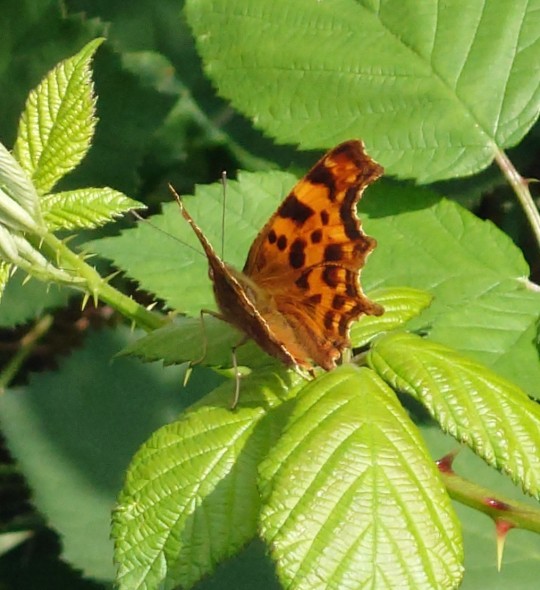

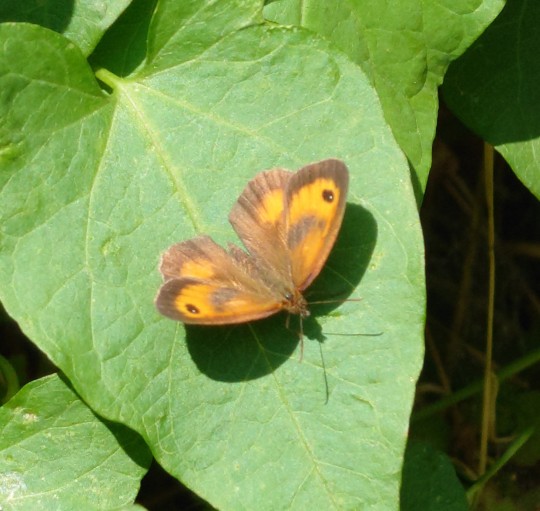

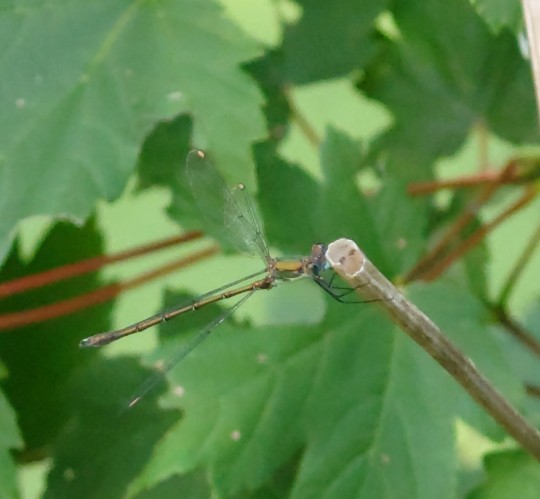

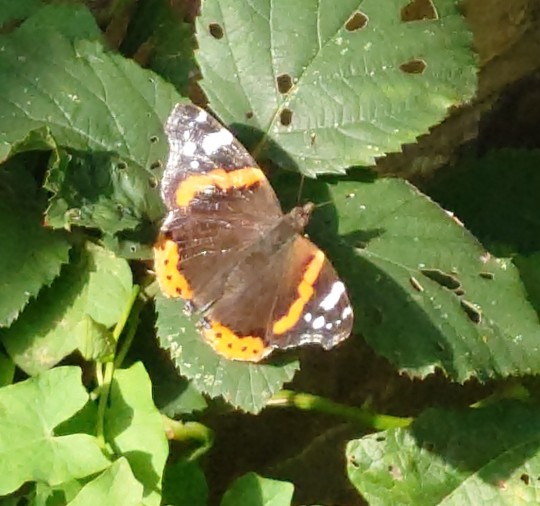

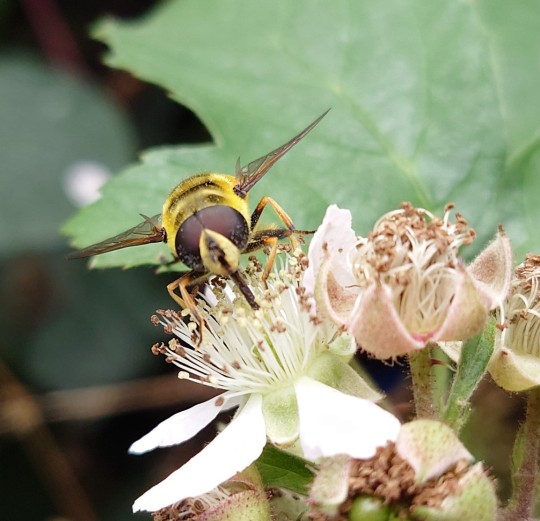

Some flyers from my garden! How many do you recognise?
- - -
[All photos taken by me, DeeperMadness, on a Sony Xperia 1 IV]
#Butterfly#Moth#Dragonfly#Damselfly#Hoverfly#Mimic#Photography#Flower#Garden#My photos#Comma butterfly#Jersey tiger moth#Apple leaf skeletonizer#Holly blue#Gatekeeper#Red admiral#Banded demoiselle#Demoiselle#Southern emerald damselfly#Southern emerald
13 notes
·
View notes
Text
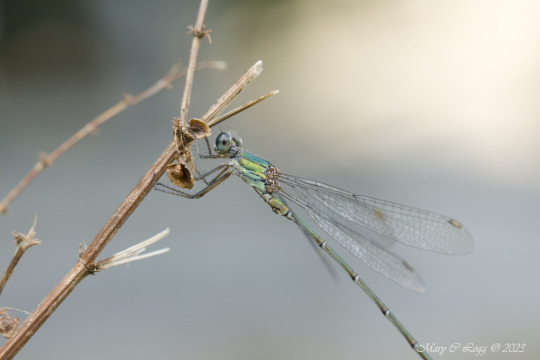
Willow Emerald, Chalcolestes viridis Canon 400D EF 100 2.8 f/5.6 1/40 iso: 100 Prague, Czech Republic 9/8/2008
#Damselflies#Spreadwings#Emeralds#Odonata#Insects#invertebrates#macro#Wetlands#ponds#insectphotography#macrophotography#insect#canon
3 notes
·
View notes
Text
The Willow Emerald Damselfly - a recent colonist

View On WordPress
0 notes
Text
DAMSELFLIES
Putting in overtime at the damselfly factory to bring you this collection of silly little bugs that turn into hearts when they pair up, just in time for Valentine's Day :]







Dragonflies may be the bigger and more popular bugs but there is something that I LOVE about damselflies, and where I live there is an abundance of species and it is fairly common to find several species flitting along the water's edge together. Unlike dragonflies though it is impossible to recognize them from a distance, and it takes a lot of dedication to find out what species you're looking at. I tried to include a great many species of all sorts of colors, some cryptic, some easily identifiable, to really try to recreate the joyful experience that is observing damselflies. Maybe there are some species here that you recognize :]
Species included (left to right, top to bottom): 1. Ebony Jewelwing, 2. Great Spreadwing, 3. Desert Firetail, 4. American Rubyspot, 5. Western Red Damsel, 6. Emerald Spreadwing, 7. Chalky Spreadwing, 8. Southern Spreadwing, 9. Cerulean Dancer, 10. Spine-tipped Dancer, 11. Springwater Dancer, 12. Powdered Dancer, 13. Tonto Dancer, 14. Sooty Dancer, 15. Blue-ringed Dancer, 16. Fiery-eyed Dancer, 17. Aztec Dancer, 18. Lavender Dancer, 19. Amethyst Dancer, 20. Kiowa Dancer, 21. Citrine Forktail, 22. Rambur's Forktail, 23. Western Forktail, 24. Black-fronted Forktail, 25. Pacific Forktail, 26. Painted Damsel, 27. Familiar Bluet, 28. Orange Bluet, 29. Double-striped Bluet, 30. Claw-tipped Bluet, 31. Arroyo Bluet, 32. Neotropical Bluet, 33. Blue-winged Helicopter (fun fact: even though dragonflies are generally larger than damselflies, this damselfly has a wingspan greater than that of all living dragonflies, at about 7 inches!!)
#bugs#art#pixel art#artists on tumblr#insects#tumblr art#pixel graphics#art comms open#game dev#bug#odonata#damselfly#damselflies#bug game#bugblr#bug blog#digital artist#indie game#pixel illustration
234 notes
·
View notes
Text










Ebony Jewelwing - Calopteryx maculata
This is one of the most beautiful and eye-catching specimens to behold in Ontario. This specie is easily recognizable thanks to its lustrous green body (which may be more prominent in males and more subdued in females) and broad wings which are all dark or have a smoky look. Actually, if you look closer at the leading (forwardmost) edge of the wings, you may notice that they too are emerald colored! Other North American Calopteryx species may appear similar in terms of form an iridescence, such as the Sparkling Jewelwing (C. dimidiata) and the Superb Jewelwing (C. amata). However, from the images I've seen, all of these Broad-winged Damselflies have some degree of distinctly clear wings. They might have a small patch or section on the wings that are black, but the majority of them are otherwise clear (aside from their veins), much like typical Odonates. Looks like identifying this beautiful summer flier is quite simple then. Look for them perching by water and occasionally fluttering to find a better spot. If you intend to photograph such a beautiful Damselfly, approach them slowly and remain persistent. They're always watching out for things around, friend and prey alike, and they have no plans to walk to a new location, only to fly.
It's worth noting that the wings of the Ebony Jewelwing actually darken over time after it emerges from the water and fully matures and spend more time perching and flying. If you compare the first 6 pictures to the remaining 4, you can see this for yourself. Individual variation is always a factor, but it's likely the individual from 2022 was relatively "fresher" compared to the one from 2024. While the wings may darken, the white spot on the female's pterostigma - seen in both of these two stunning individuals - will always remain. Since the wings of this summer Damselfly are dark colored in both males and females, I sometimes wonder how significantly their wings contribute to their thermoregulation as they bask in the sun. With their smoky to dark shading and their surface area, the wings are likely powerful absorbers and radiators of heat as the insect perches. Furthermore, looking at the perching positions of these individuals' abdomens in these images while at rest (sometimes between the wings, sometimes not), the abdomen may be shifting to try and minimize prolonged exposure to heat. It's also worth considering that the more metallic/reflective bodies of male Ebony Jewelwings deflect heat differently compared to the darker bodies of the females (although these individuals were quite gleaming). Food for thought, I suppose, and maybe it's something I can look for the next time these insects are spotted fluttering by the neighborhood stream.
Pictures were taken on July 8, 2022 and July 1, 2024 with a Google Pixel 4.
#jonny’s insect catalogue#ontario insect#damselfly#ebony jewelwing#broad winged damselfly#odonata#insect#toronto#july2022#2022#july2024#2024#entomology#nature#arthropods#invertebrates#photography#animals
31 notes
·
View notes
Text

Emerald Spreadwing Damselfly
With such brilliant colors to show off it is a shame that these tiny damselflies aren't a bit bigger.
382 notes
·
View notes
Text
Back on my hyperfixation shenanigans so I have not slept and here's a list of what I consider to be the prettiest beetles, butterflies and moths, damselflies, and grasshoppers and crickets that inhabit Colorado and Kentucky according to insectidentification.org :
COLORADO
Emerald ash borer (Agrilus planipennis)
Fifteen-spotted lady beetle (Anatis labiculata)
Golden tortoise beetle (Charidotella sexpunctata)
Knapweed root weevil (Cyphocleonus achates)
Longhorn beetle (Semanotus amethystinus)
Dogbane Leaf Beetle (Chrysochus auratus)
European Ground Beetle (Carabus nemoralis)
Golden Net-wing Beetle (Dictyoptera aurora)?
Margined Blister Beetle (Epicauta funebris)
May Beetle - P. lanceolata (Phyllophaga lanceolata)
Mottled Tortoise Beetle (Deloyala guttata)
Pleasing Fungus Beetle (Gibbifer californicus)
Poplar Borer Beetle (Saperda calcarata)
Shining Leaf Chafer - Anomala spp. (Anomala spp.)
Signate Lady Beetle (Hyperaspis signata)
American Lappet Moth (Phyllodesma americana)
Cinnabar Moth (Tyria jacobaeae)
Common Checkered-Skipper (Pyrgus communis)
Glover's Silkmoth (Hyalophora columbia gloveri)
Great Ash Sphinx Moth (Sphinx chersis)
Autumn Meadowhawk (Sympetrum vicinum)
Black Saddlebags Skimmer (Tramea lacerata)
Bird Grasshopper (Schistocerca spp.)
Obscure Bird Grasshopper (Schistocerca obscura)
Sooty Longwing Katydid (Capnobotes fulginosus)
KENTUCKY
Andrew's Snail-eating Beetle (Scaphinotus andrewsii)
Black Firefly (Lucidota atra)
Calligrapha Beetle (Calligrapha spp)
Eastern Hercules Beetle (Dynastes tityus)
Emerald Euphoria Beetle (Euphoria fulgida)
Glowworm (Phengodes spp.)
Goldsmith Beetle (Cotalpa lanigera)
Metallic Wood-boring Beetle: Chalcophora (Chalcophora fortis)
Notched-mouth Ground Beetle (Dicaelus purpuratus)
One-spotted Tiger Beetle (Apterodela unipuncata)
Rainbow Darkling Beetle (Tarpela micans)
Rainbow Scarab Beetle (Phanaeus vindex)
Six-spotted Tiger Beetle (Cicindela sexguttata)
Southern Sculptured Pine Borer Beetle (Chalcophora georgiana)
Stag Beetle (Lucanus capreolus)
Twice-stabbed Lady Beetle (Chilocorus stigma)
Vietinghoff's Ground Beetle (Carabus vietinghoffii)
Abbott's Sphinx Moth (Sphecodina abbottii)
American Ermine Moth (Yponomeuta multipunctella)
Arched Hooktip (Drepana arcuata)
American Bird's-Wing Moth (Dypterygia rozmani)
Arcigera Flower Moth (Schinia arcigera)
Attentive Crocus Moth (Xanthotype attenuaria)
Basswood Leafroller (Pantographa limata)
Beautiful Wood-Nymph (Eudryas grata)
Black-waved Flannel Moth (Megalopyge crispata)
Blackberry Looper (Chlorochlamys chloroleucaria
Blinded Sphinx Moth (Paonias excaecata)
Bluish Spring Moth (Lomographa semiclarata
Buck Moth (Hemileuca maia)
Carmine Snout Moth (Peoria approximella)
Carrot Seed Moth (Sitochroa palealis)
Cecropia Silk Moth (Hyalophora cecropia)
Changeable Grass-Veneer (Fissicrambus mutabilis)
Colorful Zale (Zale minerea)
Common Lytrosis Moth (Lytrosis unitaria)
Confused Eusarca (Eusarca confusaria)
Cross-lined Wave (Timandra amaturaria)
Curve-toothed Geometer (Eutrapela clemataria)
Dark-banded Geometer (Ecliptopera atricolorata)
Deep Yellow Euchlaena (Euchlaena amoenaria)
Diaphania costata (Diaphania costata
Dimorphic Macalla (Epipaschia superatalis)
Dot-lined White (Artace cribrarius)
Dotted Gray (Glena cribrataria)
Drab Prominent (Misogada unicolor)
Eight-spotted Forester Moth (Alypia octomaculata)
Elder Shoot Borer (Achatodes zeae)
Explicit Arches (Lacinipolia explicata)
Eyed Paectes Moth (Paectes oculatrix)
Falcate Orangetip (Anthocharis midea) (female)
Fall Webworm (Hyphantria cunea)
False Crocus Geometer (Xanthotype urticaria
Fervid Plagodis (Plagodis fervidaria)
Fig Sphinx (Pachylia ficus)
Friendly Probole Moth (Probole amicaria)
Giant Leopard Moth (Hypercompe scribonia)
Goldcap Moss-eater Moth (Epimartyria auricrinella)
Gray-edged Hypena (Hypena madefactalis)
Green Arches (Anaplectoides prasina)
Hag Moth (Phobetron pithecium
Hibiscus Leaf Caterpillar Moth (Rusicada privata)
Imperial Moth (Eacles imperialis)
Lesser Maple Spanworm Moth (Speranza pustularia
Luna Moth (Actias luna)
Melissa Blue Butterfly (Plebejus melissa spp.)
Modest Sphinx Moth (Pachysphinx modesta)
Morbid Owlet Moth (Chytolita morbidalis)
Orange-patched Smoky Moth (Pyromorpha dimidiata)
Pale Beauty (Campaea perlata)
Pale Lichen Moth (Crambidia pallida)
Pale Metarranthis (Metarranthis indeclinata)
Pandorus Sphinx Moth (Eumorpha pandorus)
Parthenice Tiger Moth (Apantesis parthenice)
Pearly Wood-Nymph Moth (Eudryas unio)
Pero Moth (Pero spp.)
Pink-patched Looper (Eosphoropteryx thyatyroides)
Pipevine Swallowtail (Battus philenor)
Pistachio Emerald Moth (Hethemia pistasciaria)
Plebeian Sphinx Moth (Paratrea plebeja) (Caterpillar)
Primrose Moth (Schinia florida)
Promiscuous Angle Moth (Macaria promiscuata)
Raspberry Pyrausta (Pyrausta signatalis)
Rustic Sphinx Moth (Manduca rustica)
Saddleback Caterpillar Moth (Acharia stimulea)
Saddled Yellowhorn (Colocasia flavicornis)
Salt-and-pepper Looper Moth (Syngrapha rectangula)
Satin Moth (Leucoma salicis)
Scarlet-winged Lichen Moth (Hypoprepia miniata)
Schlaeger's Fruitworm Moth (Antaeotricha schlaegeri)
Showy Emerald Moth (Dichorda iridaria)
Small Bird Dropping Moth (Ponometia erastrioides)
Snowy Urola (Urola nivalis)
Sorghum Webworm Moth (Nola cereella)
Southern Flannel Moth (Megalopyge opercularis)
Southern Longhorn Moth (Adela caeruleella)
Southern Pine Sphinx (Lapara coniferarum)
Southern Tussock Moth (Dasychira meridionalis)
The Badwing (Dyspteris abortivaria)
Unspotted Looper Moth (Allagrapha aerea)
Venerable Dart Moth (Agrotis venerabilis
Vine Sphinx Moth (Eumorpha vitis)
Walnut Sphinx Moth (Amorpha juglandis)
Wavy-lined Emerald Moth (Synchlora aerata)
Western Grapeleaf Skeletonizer Moth (Harrisina metallica)
White Flannel Moth (Norape ovina)
White Slant-line Moth (Tetracis cachexiata)
White-fringed Emerald Moth (Nemoria mimosaria)
Yucca Moth (Tegeticula, Greya, and Prodoxus spp.)
Carolina Locust (Dissosteira carolina)
Eastern Shieldback Katydid (Atlanticus spp.)
Slender Meadow Katydid (Conocephalus fasciatus)
True Katydid (Pterophylla camellifolia)
Ebony Jewelwing (Calopteryx maculata)
Midland Clubtail (Gomphurus fraternus)
Red Saddlebags (Tramea onusta)
Seepage Dancer (Argia bipunctulata)
5 notes
·
View notes
Text
I haven't posted in a while. I think it's because I get so caught up in whether or not a thing is a Little Magic or a Gratitude or a Glimmer or Some Other Thing and then I leave it be. But today I went down to the River and it's been a few weeks since I went down to the River and what I saw there and sat with and experienced and was honored to witness down at the River was all of this and all of the Little Magics in between all of this. One Great Blue Heron One Bald Eagle One Kingfisher who tried to land a meal twice Two Ducks of an unknown variety Two Green Herons Three Dragonflies Countless Damselflies A bright shiny emerald green Beetle A Spider A leaf caught in a Spider's web Stairs to another world An Artist hard at work Dappled shade Signs A Bank(?) Swallow Medicine Families A Disco Ball Shine under a Log Grandmother Beech's children getting tall in the bright Sun My own Exhale
#semantics#fishers#the River#Medicine#birds#insects#winged ones#webs#growth#breath#healing#portals#art#light
2 notes
·
View notes
Text
Dragonfly Life Cycle
Egg
Eggs hatch either within 2-5 weeks or, in the case of the emerald damselflies and some hawkers and darters, the following spring.
Larva
A tiny tadpole-like prolarva emerges from the egg. If the egg is laid above water, the prolarva wriggles to safety as soon as it hatches and moults within a few hours. Prolarvae that hatch below the water moult almost immediately.
Dragonflies spend most of their lives in their larval stage. During its time the dragonfly catches and eats live prey at every opportunity, moulting a further 5-14 times until it is fully-grown. Larval development typically takes one or two years, but ranges from 2-3 months (emerald damselflies) to more than five years (Golden-ringed Dragonfly). Development takes longer in cooler waters where food is scarcer, whilst in warm waters there may be a new generation every year.
Damselfly larvae can be separated from Dragonfly larvae by their caudal lamellae, which are fin-like structures at the end of their abdomen that act as external gills.
All dragonfly larvae have six legs (as do adults), wing-sheaths, an extendable hinged jaw (labium) that can shoot out in an instant and catch prey. Prey includes insect larvae, crustaceans, worms, snails, leeches, tadpoles and small fish. Dragonfly larvae themselves can fall victim to predators, including other dragonfly larvae, fish and waterfowl.
The larvae of some species are covered in hairs that collect silt or organic debris from the soft sediment within which they live. Others are coloured green and/or brown, which helps to provide camouflage amongst the submerged plants and algae they inhabit. Species living in bottom sediments have relatively poor eyesight, but instead use their hairs, long legs and antennae to sense prey. By contrast, hawkers have large eyes and hunt by sight amongst plants nearer the surface.
Adult
Tenerals are newly-emerged adult dragonflies that are weak in flight and pale in colouration. As the body and wings harden off they begin hunting for food whenever fine weather permits.
The life-expectancy of adults is short, typically no more than a week or two, but sometimes they can last 6-8 weeks. Adult dragonflies have voracious appetites, and can be observed hunting other flying insects, particularly small flies, on sunny days.
Harvard Referencing:
BRITISHDRAGONFLYSOCIETY. (N/A) Life Cycle And Biology. [Online] Available from: https://british-dragonflies.org.uk/odonata/life-cycle-and-biology/#:~:text=Dragonflies%20undergo%20incomplete%20metamorphosis%3B%20unlike,takes%20place%20out%20of%20water. [Accessed: 25th February 2024]
1 note
·
View note
Text
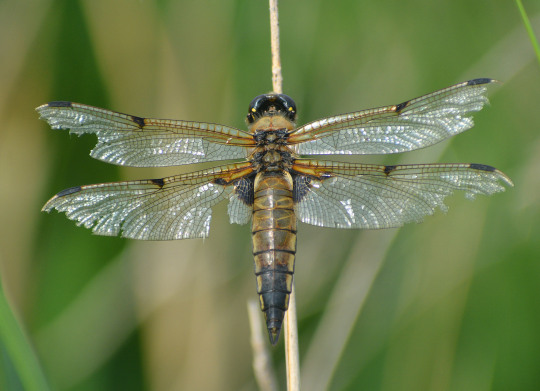



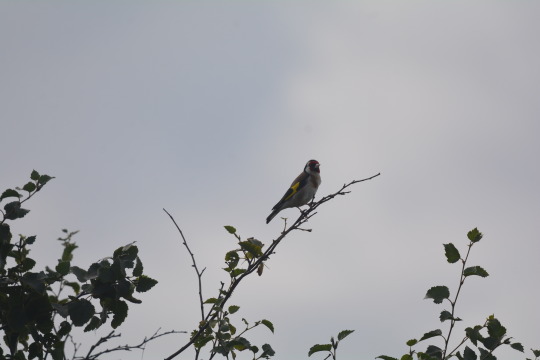
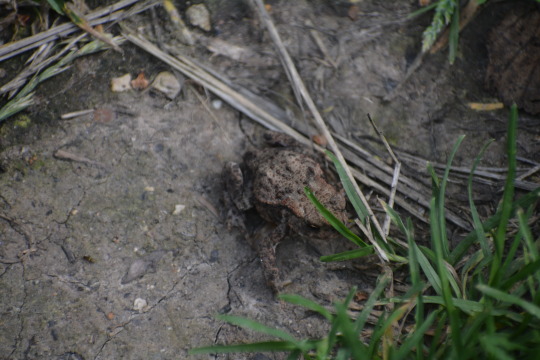




08/07/2023-Swallowtail and more at Hickling Broad
Photos in this set are of: 1. The dragonfly that caught my eye and us stopping to look at put us in the right place at the right time to see the Swallowtail, a dazzling insect to watch itself with its worn but still impressive wings glistening in the emerging sunlight, a Four-spotted Chaser. 2, 4, 8, 9 and 10. Views at this beautiful broads spot, I really enjoyed coming here last year and did again. A truly lovely place. 3. A key flower of the site which I very much enjoyed seeing, hemp agrimony. 5. Goldfinch. 6. A nice little toad we liked coming across. 7. A Black Clock beetle one of a few new insects I enjoyed discovering on the walk round this reserve.
Of course when it comes to other highlights this is dominated by one of my greatest ever wildlife watching moments, as that sensational Swallowtail emerged and heavily glided through the air; flashing its racy bright colours and grand, intricate and emblematic markings like a sightly cathedral on wings. This was such a big and long awaited moment for me, I can already see it's one of those moments I just want to replay in my mind over and over. It was an insect fest with my first Brown Hawkers seen from the off at the car park, rustic Ruddy Darter and Emerald Damselflies of the year alongside many Black-tailed Skimmers a smashing day for dragon and damselflies. Red Admiral, Peacock, Meadow Brown and Gatekeeper were other good butterflies to see. Fine caterpillars, Peacock butterfly and Garden Tiger moth moments after the Four-spotted Chaser and dream Swallowtail sighting furthered the delve into new species and little things of nature on the walk. It was a great one for birds too with typical Norfolk bird Marsh Harrier, Great White Egret, Little Egret, Grey Heron, Lapwing, Egyptian Goose, Pheasant, Reed Bunting and fittingly Swallow other key birds seen. Other flowers enjoyed on the walk were my first melilot of the year, bird vetch, yarrow, bindweed, nightshade, red campion, herb-Robert, pineappleweed, buttercup and honeysuckle. As we did when we visited last year on the way out we saw a Kestrel closely on a wire nearby. What a phenomenal day.
#swallowtail#hickling broad#norfolk broads#norfolk#england#uk#world#nature#butterfly#butterflies#marsh harrier#great white egret#swallow#ruddy darter#brown hawker#hemp agrimony#emerald damselfly#happy#lapwing#egyptian goose#birdwatching#insects#dragonflies#flowers#europe#2023
9 notes
·
View notes
Text


















Emerald thread ✧
(M) 물잠자리 (Calopteryx japonica)
#photographers on tumblr#my photography#original photographers#art#lensblr#photography#insect photography#wildlife photography#macro photography#nature photography#nature#naturecore#insect#odonata#colorful#damselfly#damselflies#jewel#bugblr#entomology#wetlands#emerald#threads#may 28 2024#noai#no ai#no to generative ai
41 notes
·
View notes
Text
Wintertime – yaskhan
A damselfly’s gossamer wings Waltzes the soft light of a winter sun wind-tossed blossoms scent a quilted collage of orchards’ fruity chorus as feathered wings drift palely lit leafy gowned statuesque trees an emerald sky drips into mountain blooms bursting surfing the air, radiant in their satiny hues I sink into the sunlight gold bathing the sweet fragrance of earthy musk. Source: Wintertime –…

View On WordPress
0 notes
Text

Willow Emerald, Chalcolestes viridis Canon 400D EF 100 2.8 f/5.6 1/40 iso: 100 Prague, Czech Republic 9/8/2008 #Damselflies #Odonata #emeralds #spreadwings #Insects #invertebrates #wetlands
#Willow Emerald#Chalcolestes viridis Canon 400D EF 100 2.8 f/5.6 1/40 iso: 100 Prague#Czech Republic 9/8/2008#Damselflies#Odonata#emeralds#spreadwings#Insects#invertebrates#wetlands#macrophotography#insectphotography#macro#insect#canon
0 notes